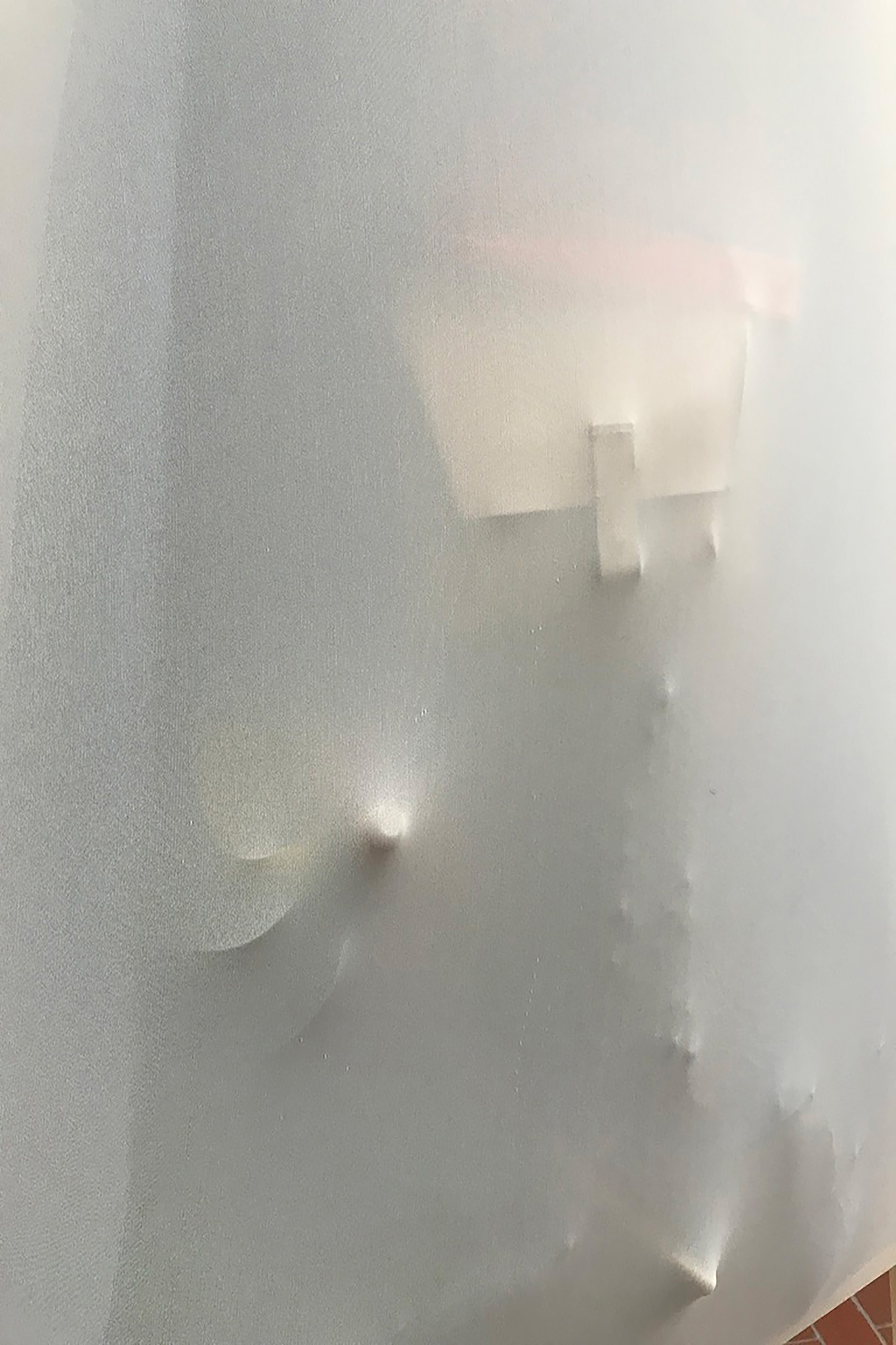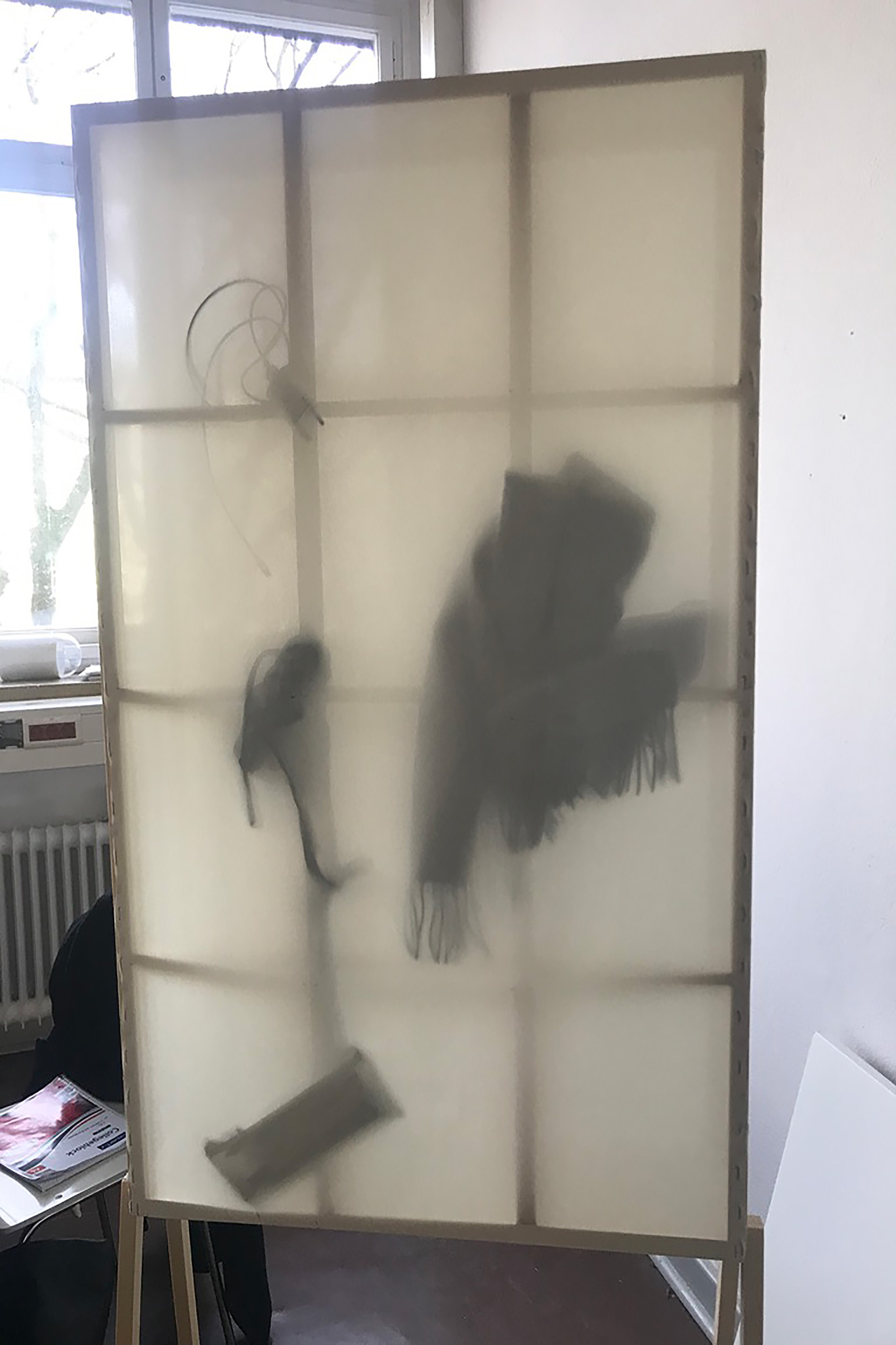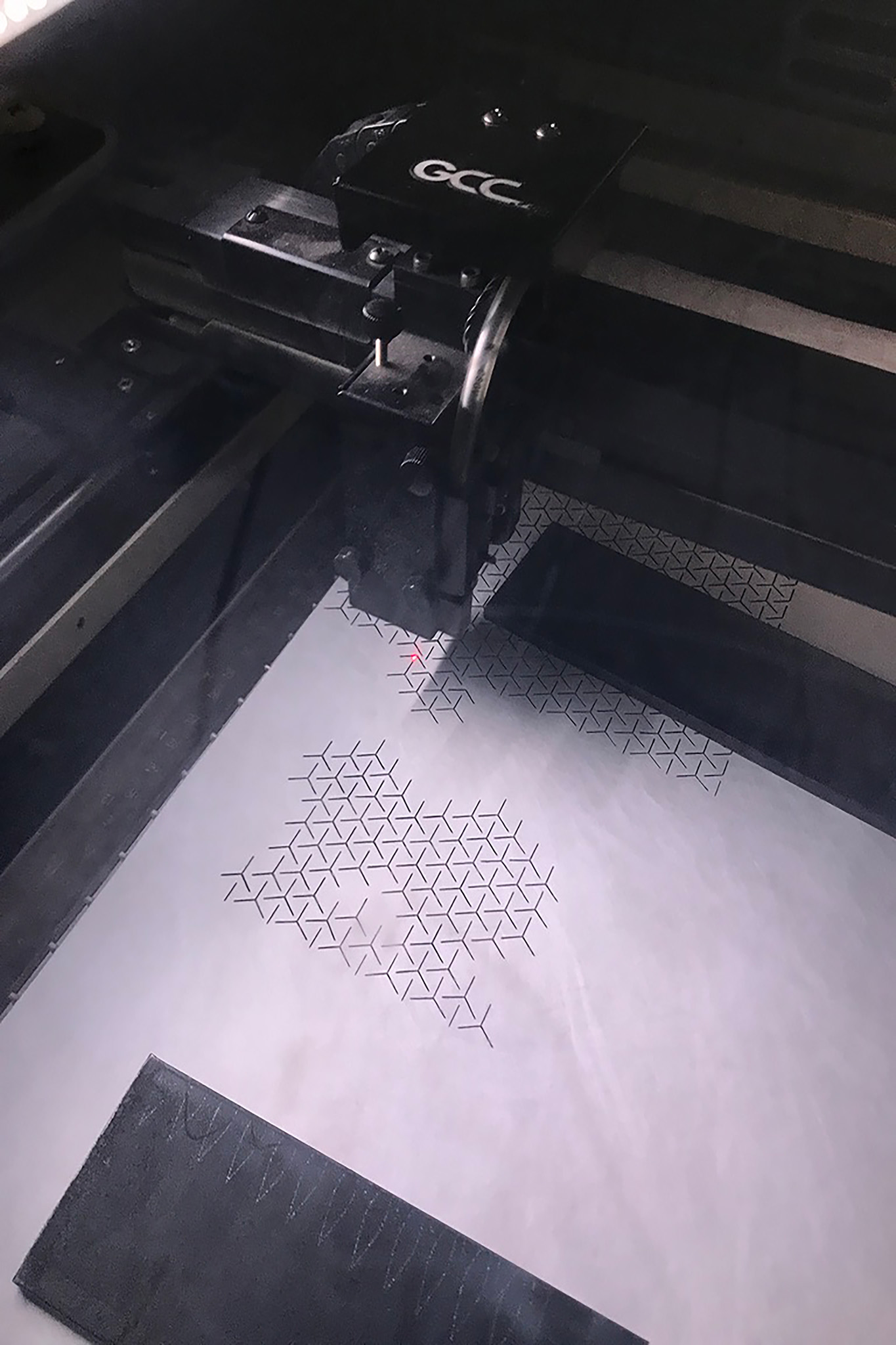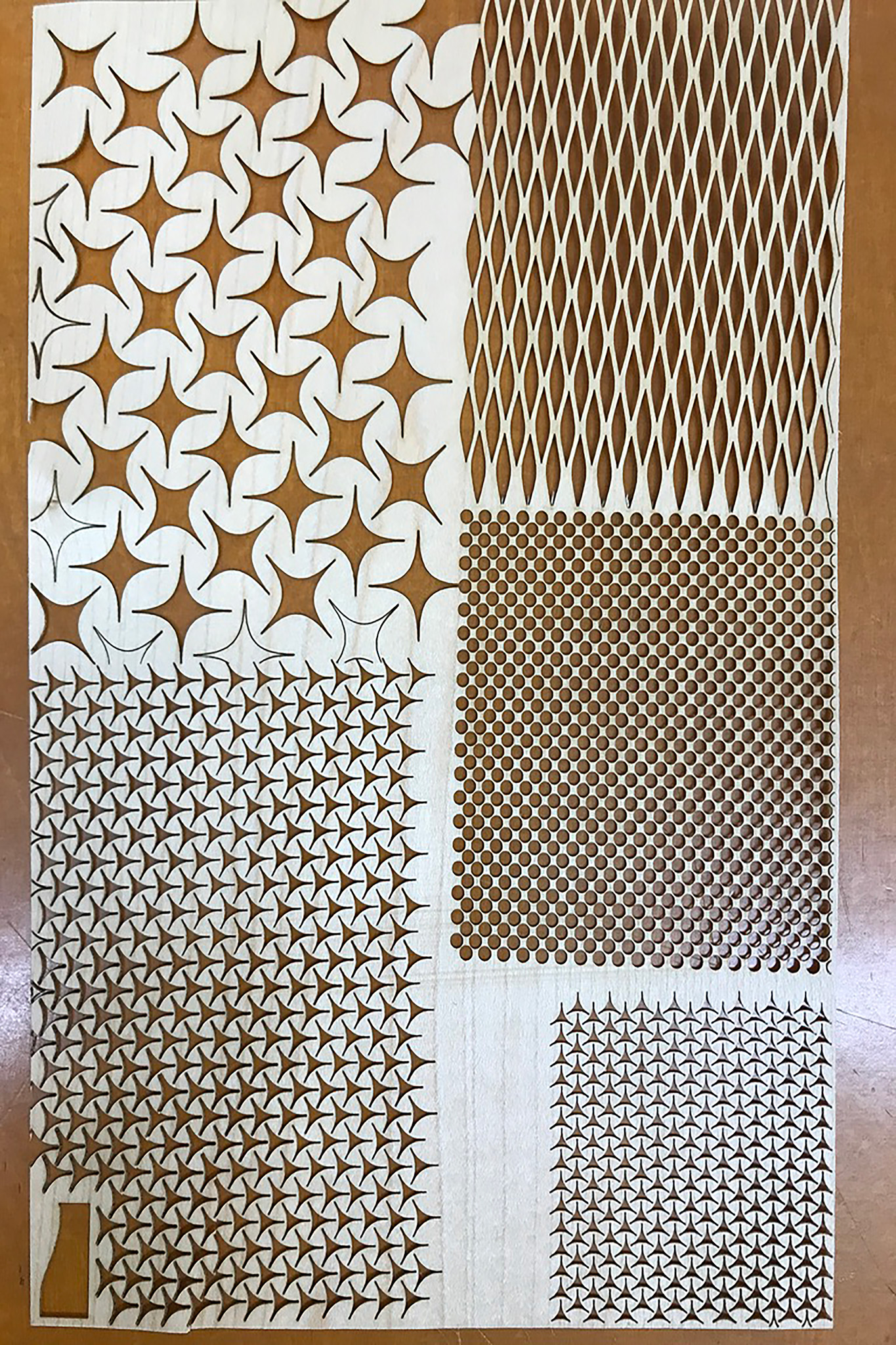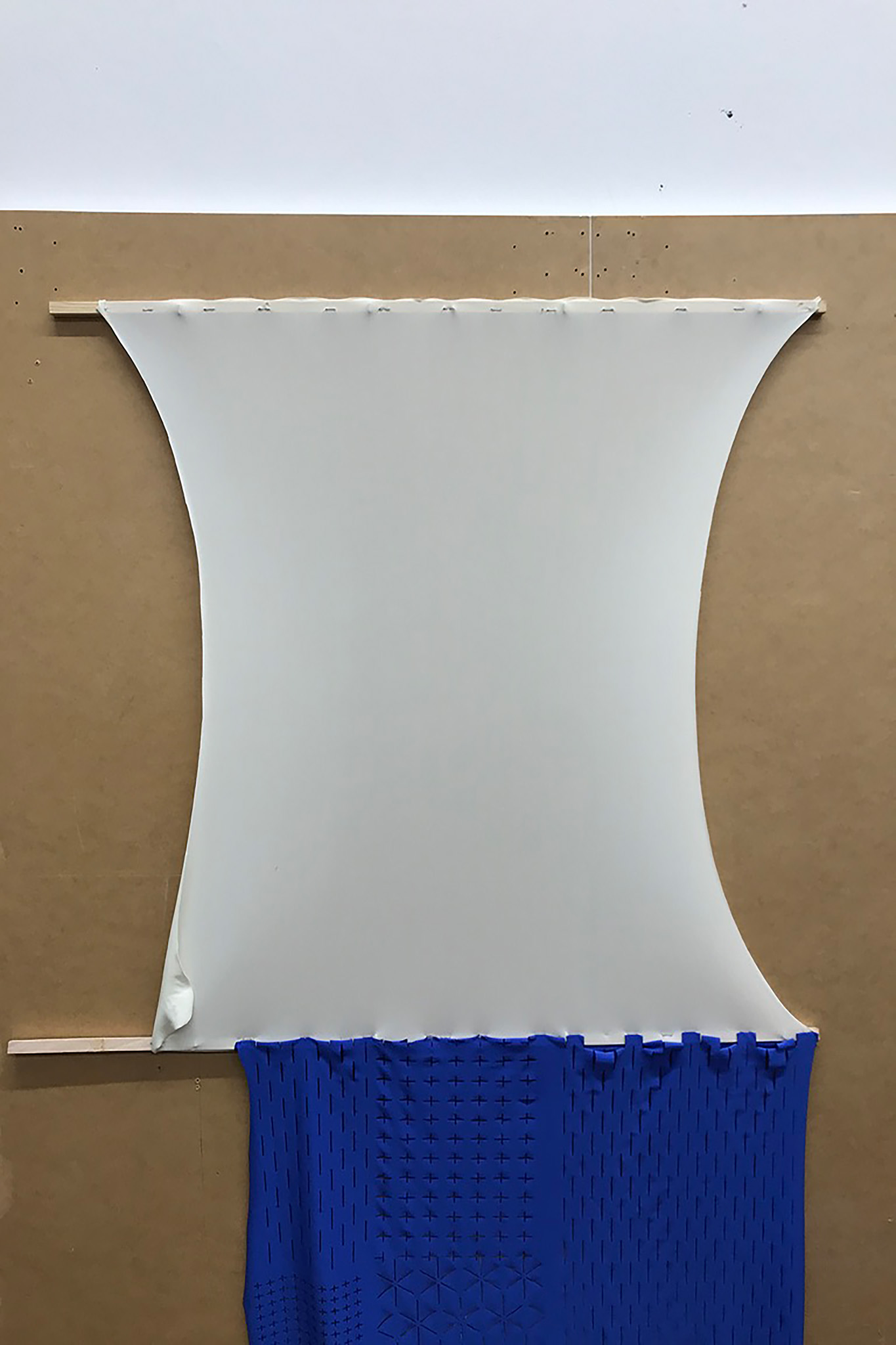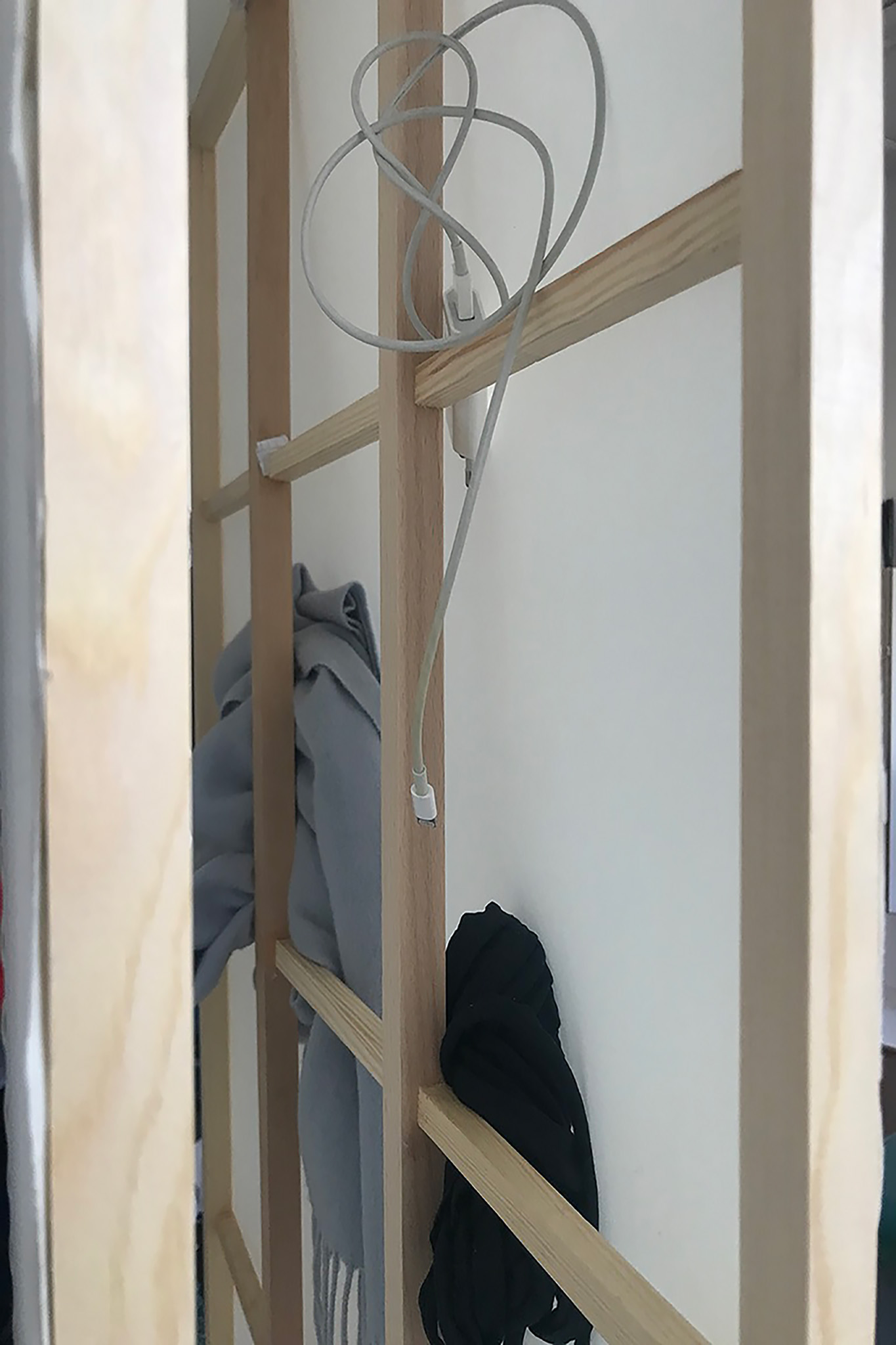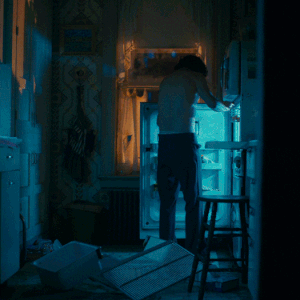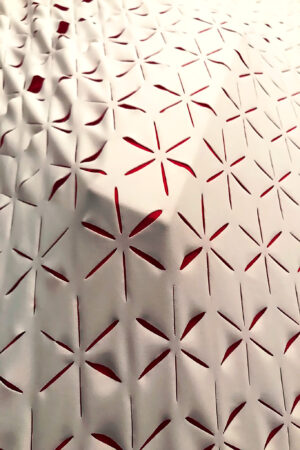
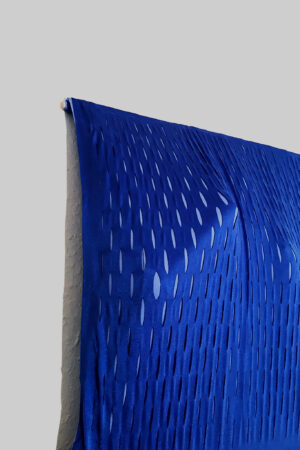
Was macht einen Schrank überhaupt zu einem Schrank? Wer legt fest, dass er zwingend ein quaderförmiges hölzernes Behältnis für Kleidung oder Küchenutensilien sein muss? Manchmal auf Füßchen stehend und verziert mit Ornamenten als Dekor oder auch ganz schlicht und geradezu anonym? Eins, das dank seiner opaken Oberfläche, jeglichen Inhalt vor der Außenwelt zu verbergen versucht? „Spannender Einblick“ stellt dagegen die Persönlichkeit des Nutzers in den Mittelpunkt und zeigt, dass ein Schrank nicht zwingend das starre, sperrige Möbel dein muss, das wir gewohnt sind. Eine elastische Stofffläche, bestehend aus drei Stofflagen, die am oberen und unteren Ende an Leisten befestigt sind, lässt sich durch Schraubhaken an die Wand spannen. Legt man von den Seiten nun etwas hinein, wird es durch die massive Spannung im Stoff an die Wand geklemmt und besonders leichtere Dinge rutschen nicht hinunter. Der Gegenstand drückt sich von innen gegen den Stoff und von außen sind so die Konturen und Strukturen erkennbar. Zudem ist der äußerste Stoff mit einem Muster eingeschnitten, wodurch sich an den Stellen, an denen sich ein Gegenstand durchdrückt, das Muster verzerrt, die Farbe des darunter liegenden Stoffes stärker hervortritt und so ein interessantes Bild entsteht. Der Schrankinhalt ist nun, ohne glatte Oberfläche, optisch direkt zugänglich und bildet die immer wieder wandelnde Form des Schranks. Das sperrige anonyme Behältnis wird zu einem platzsparenden, und auch äußerlich, persönlichen Möbel.
What makes a cabinet a cabinet anyway? Who determines that it must necessarily be a cuboid wooden container for clothes or kitchen utensils? Sometimes with little feet and decorated with ornaments as decoration or quite simple and downright anonymous? One that tries to hide any contents from the outside because of its opaque surface?
„Spannender Einblick“ focuses on the personality of the user and shows that a wardrobe doesn’t necessarily have to be the rigid, bulky furniture we are used to.
An elastic fabric surface, consisting of three layers of fabric attached to strips at the top and bottom, can be stretched against the wall using screw hooks. If you now put something in from the sides, it is clamped to the wall by the massive tension in the fabric and especially lighter things do not slide down. The object presses against the fabric from the inside and so from the outside the contours and structures are visible. In addition, the outermost fabric is cutted with a pattern, so where an object presses through, the pattern is distorted and the color of the underlying fabric becomes more prominent so it creates an interesting picture. The contents of the cabinet, without a smooth surface, are now visually directly accessible, forming the ever-changing shape of the cabinet. The bulky anonymous container becomes a space-saving and also externally, personal furniture.
PROZESS
